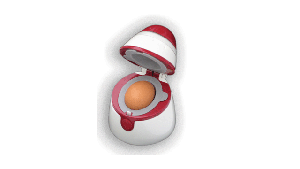A team of researchers has identified a single molecule, called TIC10, that kick-starts the body's tumor-destroying systems—causing a chain reaction that can kill cancer dead.
In a series of experiments in mice the researchers, from Pennsylvania State University, found that TIC10 activities the gene for a protein called TRAIL—that's short for tumour-necrosis-factor-related apoptosis-inducing ligand—which causes cancerous cells to commit suicide. Wafik El-Deiry, one of the researchers explains:
In a series of experiments in mice the researchers, from Pennsylvania State University, found that TIC10 activities the gene for a protein called TRAIL—that's short for tumour-necrosis-factor-related apoptosis-inducing ligand—which causes cancerous cells to commit suicide. Wafik El-Deiry, one of the researchers explains:
A series of experiments provided evidence that TIC10 works on a wide range of tumors, including breast, lymphatic, colon and lung cancer. While the TRAIL protein has been targeted in the past, it's never been exploited as successfully—something the researchers put down to the small size of the molecule TIC10. There's a hidden benefit, too, because TIC10 seems to cause healthy cells to join in the fight, too. Nature explains:"TRAIL is a part of our immune system: all of us with functional immune systems use this molecule to keep tumours from forming or spreading, so boosting this will not be as toxic as chemotherapy."
Of course, this initial testing has all been done in mice—and it remains to be seen if it will work as well as in other creature. That's why the next step is to test the molecule in humans. Keep those fingers crossed. More here.[I]t seems that TIC10 activates the TRAIL gene not only in cancerous cells, but also in healthy ones. This gives it enormous potential to create a 'bystander effect', in which apoptosis - or cell death - is induced in cancer cells immediately next to healthy ones. Healthy cells are also stimulated to increase the amount of TRAIL receptors on their cell surface. These receptors can then bind to the adjacent cancerous cells, triggering their demise. "It's almost like TRAIL-plus - it does so much more," says El-Deiry.














































